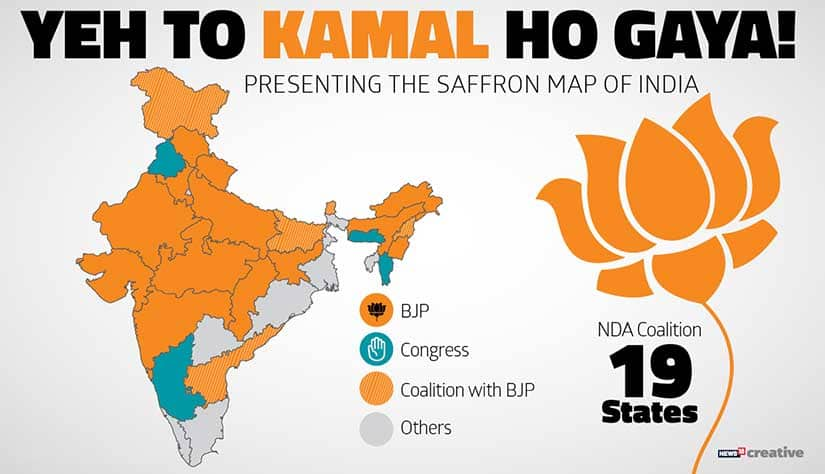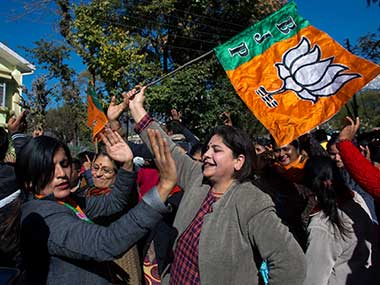The Bharatiya Janata Party (BJP) on Monday retained Gujarat for the sixth consecutive time with a tally of 99, which is seven seats more than the minimum requirement of 92 to form the government in the 182-member state Assembly. However, it fell considerably short of its Mission 150 target, which was devised by party chief Amit Shah. The BJP also wrested power from Congress in Himachal Pradesh. However, as the results show the BJP numbers reduced by 16 seats as compared to the Assembly elections in 2012 in Gujarat, where it had clinched 115 seats. Gujarat polls vote share over the years:
Gujarat Elections vote share over the years Infogram
Surmounting numerous factors like the much-discussed anti-incumbency factor, attempted caste-based social engineering by the Congress and perceived anger over the Goods and Services Tax (GST), BJP managed to clinch the polls, but not to the extent that the party or even the exit polls anticipated. BJP vote share over the years: Another point worth noticing is that it is the first time since 1995 that BJP has slipped below the 100-seat mark. BJP formed its maiden government on its own in that year. There was further significance in this election as it was the first time since Narendra Modi, a three-time chief minister, moved to the Centre as the prime minister in May 2014. However, despite his shift to New Delhi, Modi was virtually the face of the BJP campaign and held 38 rallies. The overall vote share percentage for the BJP was 49.1 percent for 2017. Congress vote share over the years: The Congress, which won 61 seats in the 2012 Assembly elections, made significant gains with its 77 seat tally this year. It added 16 seats to its kitty this time around. Though the number of seats won by the Grand Old Party and its vote share went up significantly, the assistance from Patidar, OBC and Dalit leaders Hardik Patel, Alpesh Thakor and Jignesh Mewani respectively factored into this surge in performance. Despite these improvements, it was not enough to unseat the BJP. That being said, the overall Congress vote share also went up to 41.4 percent, a two percent increase since 2012. The 77-seat tally this time is the highest for Congress since 1995, when it had won 45 seats. The party clinched 53 seats in 1998, 51 in 2002 and 59 in 2007. Another salient point to notice is that the difference in vote share between the two parties, which works out to be around 7.7 percent in 2017. This figure works in line with the trend of a shrinking gap witnessed since the 2007 Assembly polls in the western state. In 2007, BJP’s vote share was 49.12 percent against 39.63 percent for Congress, making the gap amount to 9.49 percent. This gap further reduced to 9 percent in 2012 and this year’s performance comes as a significant leap in favour of the Congress. [caption id=“attachment_4266219” align=“alignnone” width=“825”]  Infographic by network18creative[/caption] In all likelihood, the Gujarat results will set the stage for the 2019 Lok Sabha elections. The results in this state are likely to affect the upcoming state Assembly elections in other states next year. The states that will go to polls in 2018 are Karnataka, Madhya Pradesh, Rajasthan, Chhattisgarh, Tripura, Meghalaya, Mizoram and Nagaland. [caption id=“attachment_4266285” align=“alignnone” width=“825”]  Infographic by network18creative[/caption] Whether the NDA will sustain its governance in the 19 states it currently holds power in, or will the election trends show Congress catching up even further is worth looking out for. With inputs from agencies _**Click here for detailed coverage of Gujarat Assembly Election 2017**_


)



